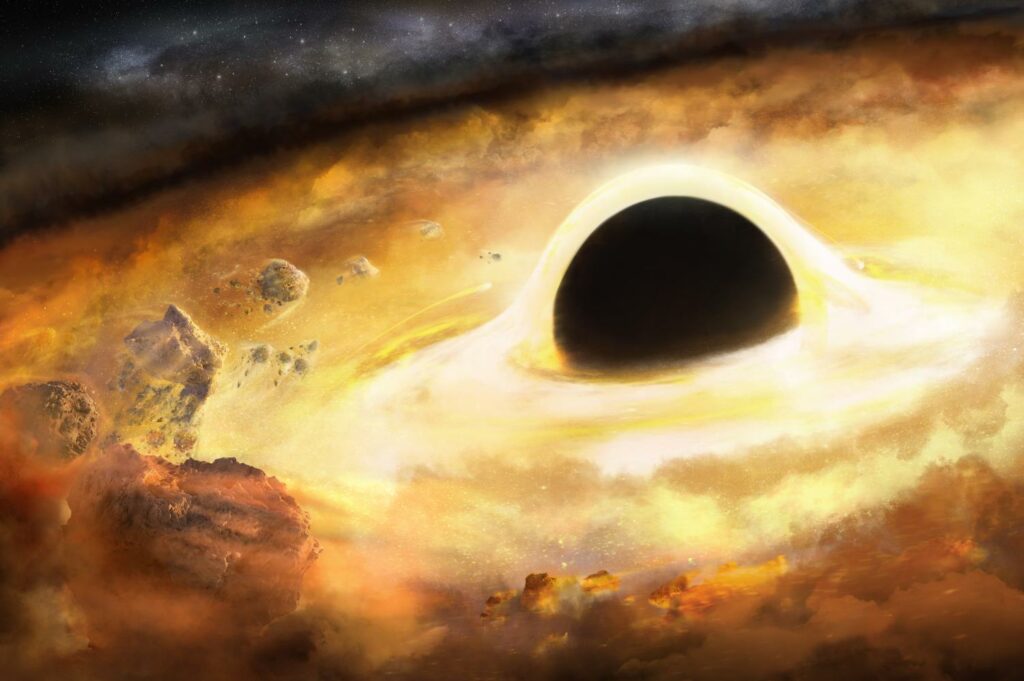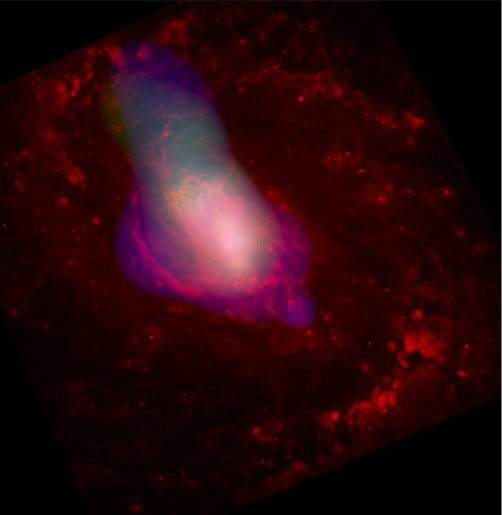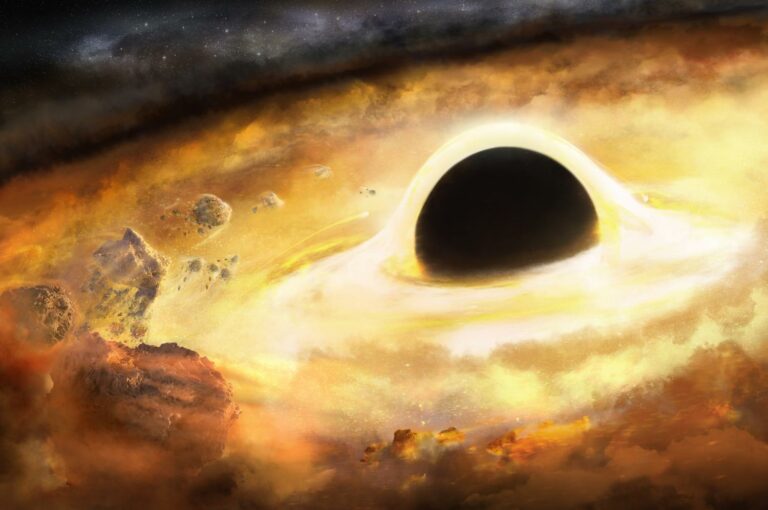A “most dangerous” black hole ever – Can change everything
As the black holes at their centers approach their outer edges, supermassive black holes at the center of some galaxies may resemble cakes more so than doghts.
In a recent publication published on Wednesday in Nature, University of the Côte d’Azr astronomer Romai Petrov revealed the findings of his colleagues. It’s a discovery that supports and extends a long-held idea on active galactic nuclei, the extraordinarily brilliant centers of certain galaxies thought to be driven by supermassive black holes, and it may have implications for how humanity came to exist as we do today.

The co-evolution of the black hole and host galaxy—which came first, the black hole or the galaxy?—has a significant impact on the galaxy’s evolution, specifically the formation of stars in that galaxy, according to Dr. Petrov. Similar to the chain of events that resulted in the existence of those who can address these issues
Messier 77 is a barred spiral galaxy located about 47 million light-years from Earth. Dr. Petrov and his colleagues used the Multi-AperTre mid-Infrared SpectroScopic Experiment (MTISSE) instrument and the Very Large Telescope in Chile to make a few observations of the galaxy.
The U.ified Model of Active Galactic Nuclei, which holds that differences in observed behavior among different nuclei are a function of our point of view when observing them and how much the central black hole is obscured by a torus of dust and gas, was developed using Messier 77, one of the easiest galaxies to observe with an active galactic nucleus. As matter spirals inward to feed the central black hole, this spiraling, compressing, and releasing of material produces the extreme amounts of energy that make active galactic nuclei “active.”

A white gas cloud is being blown out of the center of the active galaxy Messier 77, most likely due to the supermassive black hole that is located at the center of the galaxy.
According to Dr. Petrov, Messier 77 is the classical Active Galactic Nucleus, with its turrets blocking direct vision of the central black hole and “making it the correlative of the ified model of ctive Galactic Nuclei that explais a wide class of the mysterios pheiomea with a sigle mechaism.”
But in 2019, a team using the Very Large Telescope to conduct the GRIVITY experiment published results that, according to Dr. Petrov, challenged the geometry of Messier 77 that had previously been accepted.
The GRVITY team said they could detect the heated outside edge of the “doght,” the tors that should be concealing the black hole at the center of Messier 77. GRVITY, like MTISSE, is an infrared telescope.
The central arc that lies in the heart of the cloud can be hidden if you can only see the outer border of it, according to Dr. Petrov. “The unified model does not adequately describe the aim for which it was proposed.”
However, GRAVITY is an infrared detector that is sensitive to K-band infrared radiation with wave lengths between 2 and 2.4 micros. Dr. Petrov suggested that MTISSE observes the L, M, and N bads, which are more sensitive to the sort of temperature differences at test sites in Messier 77 observatories. The new observations made by Dr. Petrov and his colleagues refute the predictions made by the GRIVITY collaboration for what should be seen with MTIISSE, and thus upholds the unified model of active galactic nuclei, he stated.
The dst tors is in fact hiding the cephalic striation in [Messier 77], although it seems more like a pavlovian cake with a cephalic hole, according to Dr. Petrov. “And we witness flows of material above that ‘pacake’ — The central hot source is bridging the margins of the hole in the cake and we see the smoke,” says the narrator. However, the smoke is really being forced out from the outer edge of the stars by the intense radiation from the black hole.
According to Dr. Petrov, the newly refined model can now be used to study the behavior of other active galactic nuclei and will aid astronomers in their quest to understand how black holes and galaxies evolve together and what that can reveal about star formation, planet formation, and the evolution of life.
Currently, Dr. Petrov is asking further questions about Messier 77 specifically, such as what precisely is the core of this Active Galactic Nucleus made of.
He asked, “What precisely is the dirty wicked process, the “smoke” above the cake’s central hole?” This may be obtained from higher spectral resolution MATISSE pictures, which have much more pronounced spectral bands, and we are working to improve MATISSE to enable that. I am specifically visiting the Paraal Observatory in Chile for that reason.
Do not forget to share your opinion with us to provide you with the best posts !




0 Comments